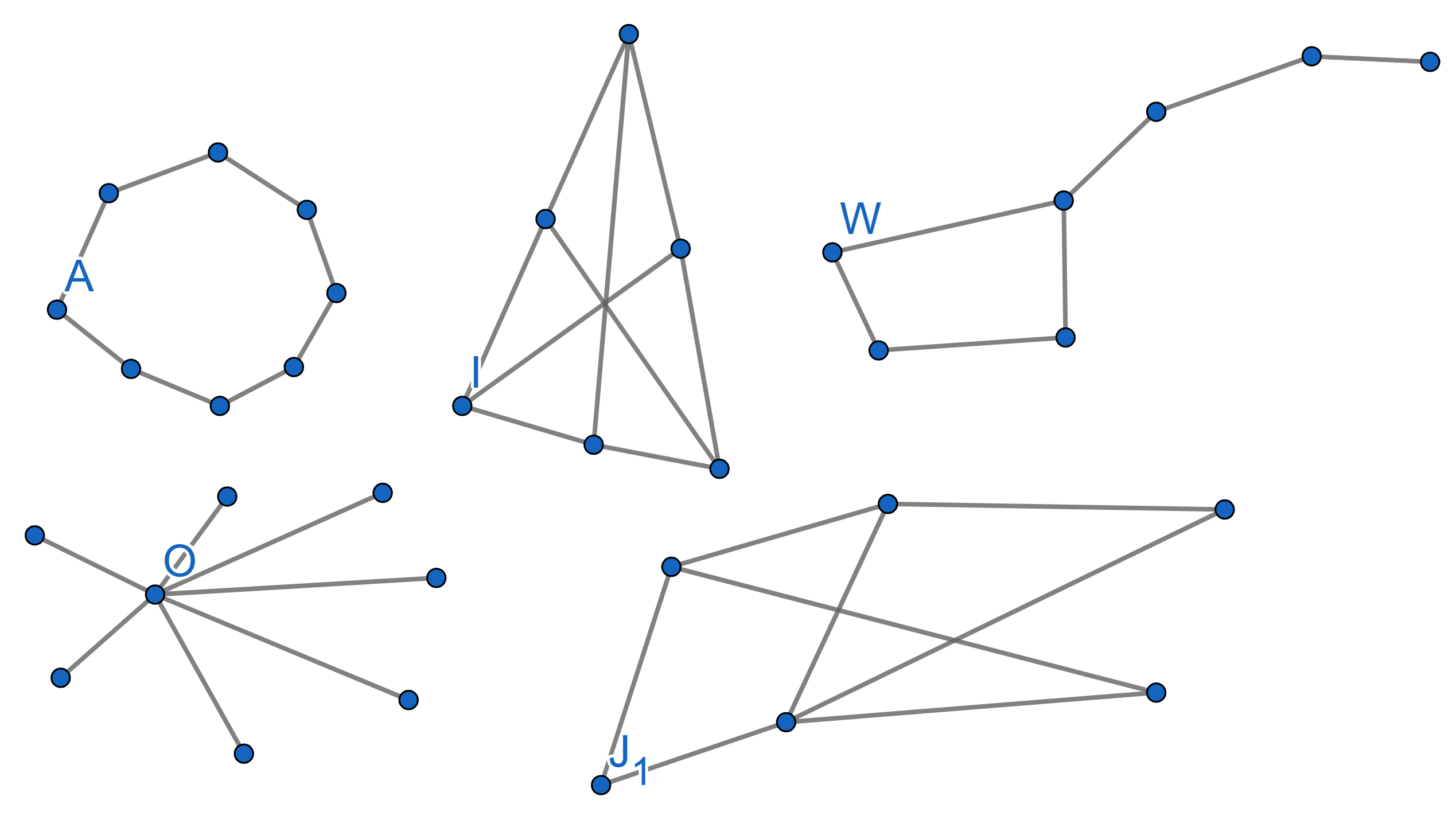Problems
An ice cream machine distributes ice cream randomly. There are 5 flavours in the machine and you would like to have one of the available flavours at least 3 times, although you don’t mind which flavour it is. How many samples do you need to obtain in total to ensure that?
Prove that among \(11\) different infinite decimal fractions, you can choose two fractions which coincide in an infinite number of digits.
A convex polygon on the plane contains at least \(m^2+1\) points with integer coordinates. Prove that it contains \(m+1\) points with integers coordinates that lie on the same line.
Suppose a football team scores at least one goal in each of the \(20\) consecutive games. If it scores a total of \(30\) goals in those \(20\) games, prove that in some sequence of consecutive games it scores exactly \(9\) goals total.
The prime factorization of the number \(b\) is \(2 \times 5^2 \times 7 \times 13^2 \times 17\). The prime factorization of the number \(c\) is \(2^2 \times 5 \times 7^2 \times 13\). Is the first number divisible by the second one? Is the product of these two numbers, \(b \times c\), divisible by \(49000\)?
A natural number \(p\) is called
prime if the only natural divisors of \(p\) are \(1\) and \(p\). Prime numbers are building blocks of
all the natural numbers in the sense of the The Fundamental
Theorem of Arithmetic: for a positive integer \(n\) there exists a unique prime
factorization (or prime decomposition) \[n =
p_1^{a_1}p_2^{a_2}...p_r^{a_r}.\] Today we will explore how
unusual prime numbers are.
Essentially there is only one way to write an integer number as a
product of prime numbers, where some of the prime numbers in the product
can appear multiple times.
A graph is a finite set of points, some of which are connected with line segments. The points of a graph are called vertices. The line segments are called edges. In this problem set we only consider graphs in which every pair of vertices is connected with one or zero edges.
In a mathematical problem, one may use vertices of a graph to represent objects in the problem, i.e. people, cities, airports, and edges of the graph represent relations between the objects such as mutual friendship, railways between cities, plane routes. As you will see in the examples below, representing the initial problem as a graph can considerably simplify the solution.
A graph is called Bipartite if it is possible to split all its vertices into two groups in such a way that there are no edges connecting vertices from the same group. Find out whic of the following graphs are bipartite and which are not:

Imagine you are a manager of a very special hotel, a hotel with an
infinite number of rooms, where each room has a natural number on the
door \(1,2,3,4,...\). Only one guest
can stay in each room and in most cases the hotel will be initially full
with no vacant rooms left.
You will have to deal with unusual situations that may occur.
Today we will solve some geometric problems using the triangle inequality. This is an inequality between the lengths of the sides of any triangle, or between the distances of any three points.
The shortest path between any two points \(A\) and \(B\) is a straight segment - every other path is longer. In particular, a path through another point, \(C\), is equal or longer. \[AC + BC \ge AB\] The triangle inequality says that the sum of lengths of any two sides of a triangle is always larger than the length of the third side. The inequality only becomes an equality if \(ABC\) is not actually a triangle and the point \(C\) lies on the segment from \(A\) to \(B\).
Even though it is a simple idea, it can be a really helpful tool in problem solving.